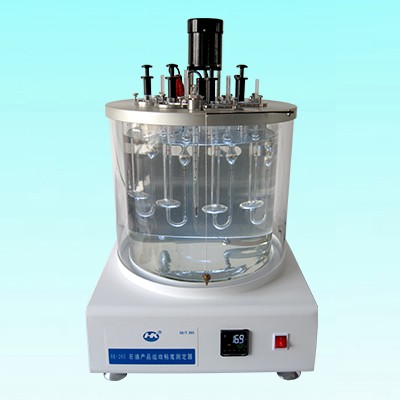

#Viscosidad cinematica iso
Tolerance and curves according to UNI EN ISO 9906 - Attachment A

Viscosity is the material property which relates the viscous stresses in a material to the rate of change of a deformation (the strain rate). For instance, in a fluid such as water the stresses which arise from shearing the fluid do not depend on the distance the fluid has been sheared rather, they depend on how quickly the shearing occurs. In other materials, stresses are present which can be attributed to the rate of change of the deformation over time. Stresses which can be attributed to the deformation of a material from some rest state are called elastic stresses. For instance, if the material were a simple spring, the answer would be given by Hooke's law, which says that the force experienced by a spring is proportional to the distance displaced from equilibrium. In materials science and engineering, one is often interested in understanding the forces or stresses involved in the deformation of a material. In a general parallel flow, the shear stress is proportional to the gradient of the velocity. A fluid that has zero viscosity is called ideal or inviscid. Su viscosidad dinámica es 10.000 cP, así que su viscosidad cinemática es 10. A 20 grados Celsius (68 grados Fahrenheit), la miel tiene una densidad de 1,42 g/ml (gravedad específica de 1,42). Zero viscosity (no resistance to shear stress) is observed only at very low temperatures in superfluids otherwise, the second law of thermodynamics requires all fluids to have positive viscosity. La viscosidad cinemática del agua a 21 grados Celsius (70 grados Fahrenheit) es 1 centistoke, y la dinámica es 1 centipoise. For example, the viscosity of a Newtonian fluid does not vary significantly with the rate of deformation. However, the dependence on some of these properties is negligible in certain cases. In general, viscosity depends on a fluid's state, such as its temperature, pressure, and rate of deformation. For a tube with a constant rate of flow, the strength of the compensating force is proportional to the fluid's viscosity. This is because a force is required to overcome the friction between the layers of the fluid which are in relative motion.

Experiments show that some stress (such as a pressure difference between the two ends of the tube) is needed to sustain the flow. For instance, when a viscous fluid is forced through a tube, it flows more quickly near the tube's axis than near its walls.

Viscosity quantifies the internal frictional force between adjacent layers of fluid that are in relative motion. For liquids, it corresponds to the informal concept of "thickness": for example, syrup has a higher viscosity than water. The viscosity of a fluid is a measure of its resistance to deformation at a given rate.


 0 kommentar(er)
0 kommentar(er)
